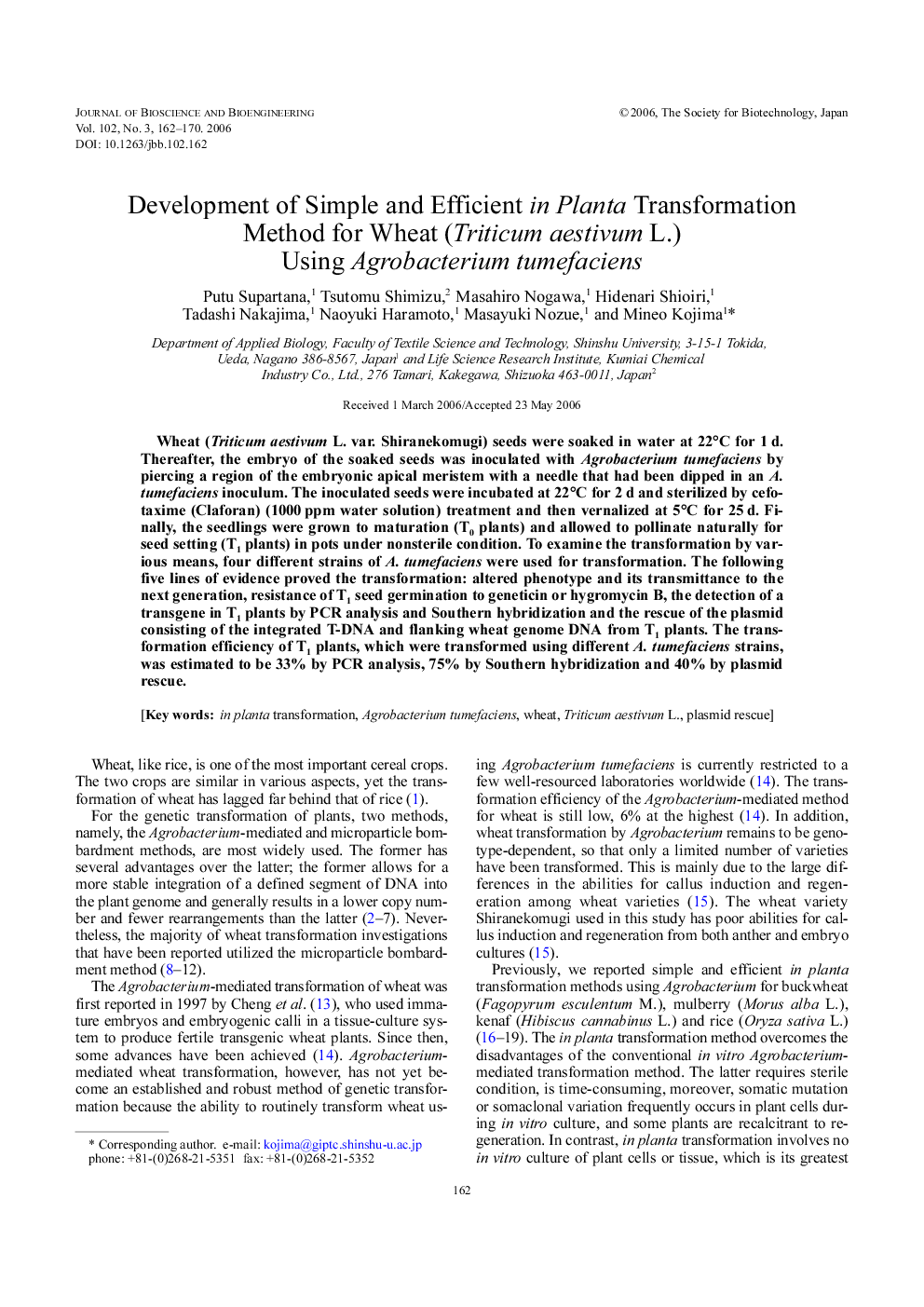| Article ID | Journal | Published Year | Pages | File Type |
|---|---|---|---|---|
| 22103 | Journal of Bioscience and Bioengineering | 2006 | 9 Pages |
Wheat (Triticum aestivum L. var. Shiranekomugi) seeds were soaked in water at 22°C for 1 d. Thereafter, the embryo of the soaked seeds was inoculated with Agrobacterium tumefaciens by piercing a region of the embryonic apical meristem with a needle that had been dipped in an A. tumefaciens inoculum. The inoculated seeds were incubated at 22°C for 2 d and sterilized by cefotaxime (Claforan) (1000 ppm water solution) treatment and then vernalized at 5°C for 25 d. Finally, the seedlings were grown to maturation (T0 plants) and allowed to pollinate naturally for seed setting (T1 plants) in pots under nonsterile condition. To examine the transformation by various means, four different strains of A. tumefaciens were used for transformation. The following five lines of evidence proved the transformation: altered phenotype and its transmittance to the next generation, resistance of T1 seed germination to geneticin or hygromycin B, the detection of a transgene in T1 plants by PCR analysis and Southern hybridization and the rescue of the plasmid consisting of the integrated T-DNA and flanking wheat genome DNA from T1 plants. The transformation efficiency of T1 plants, which were transformed using different A. tumefaciens strains, was estimated to be 33% by PCR analysis, 75% by Southern hybridization and 40% by plasmid rescue.
